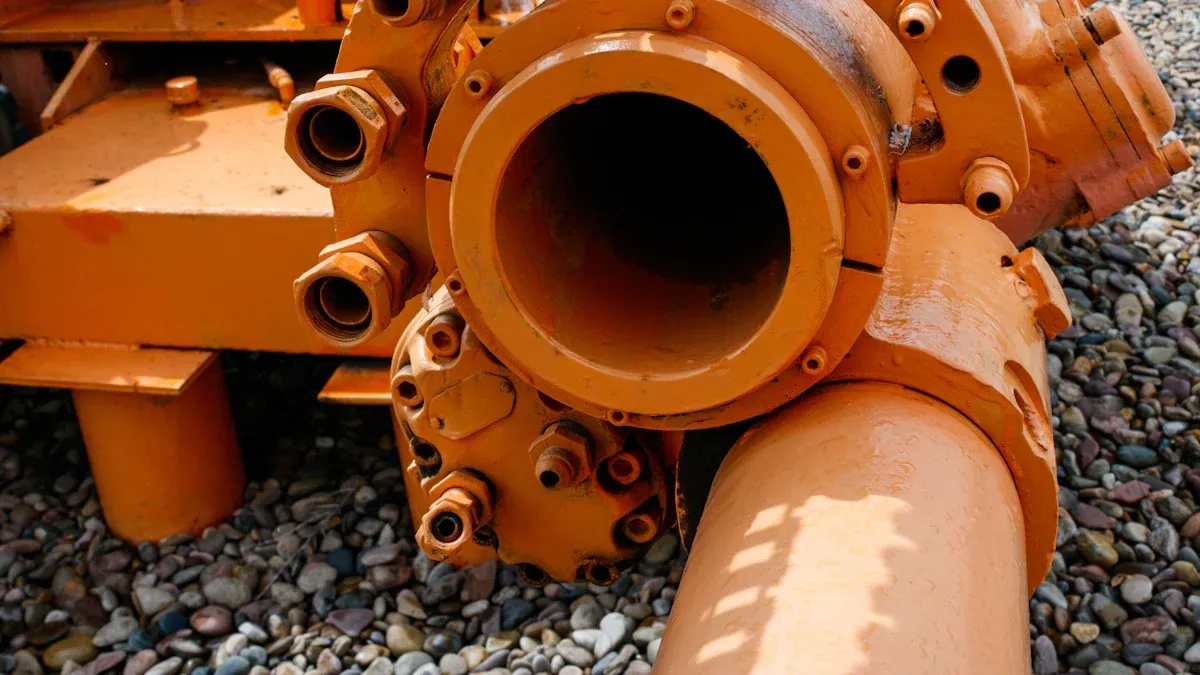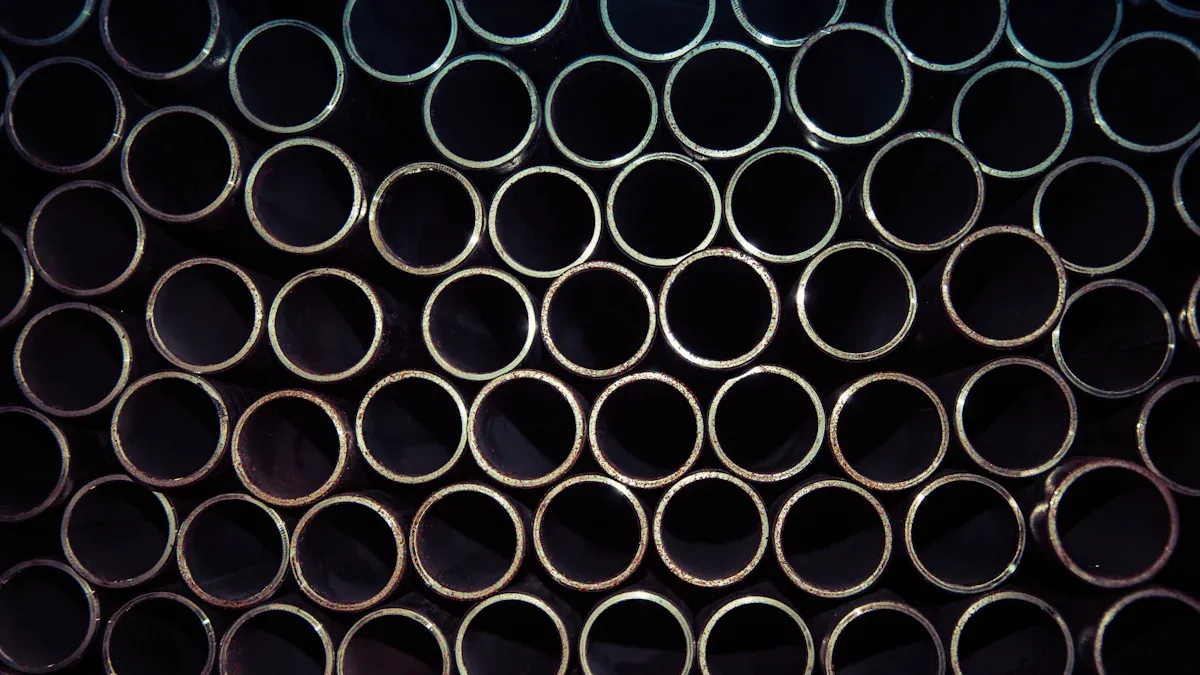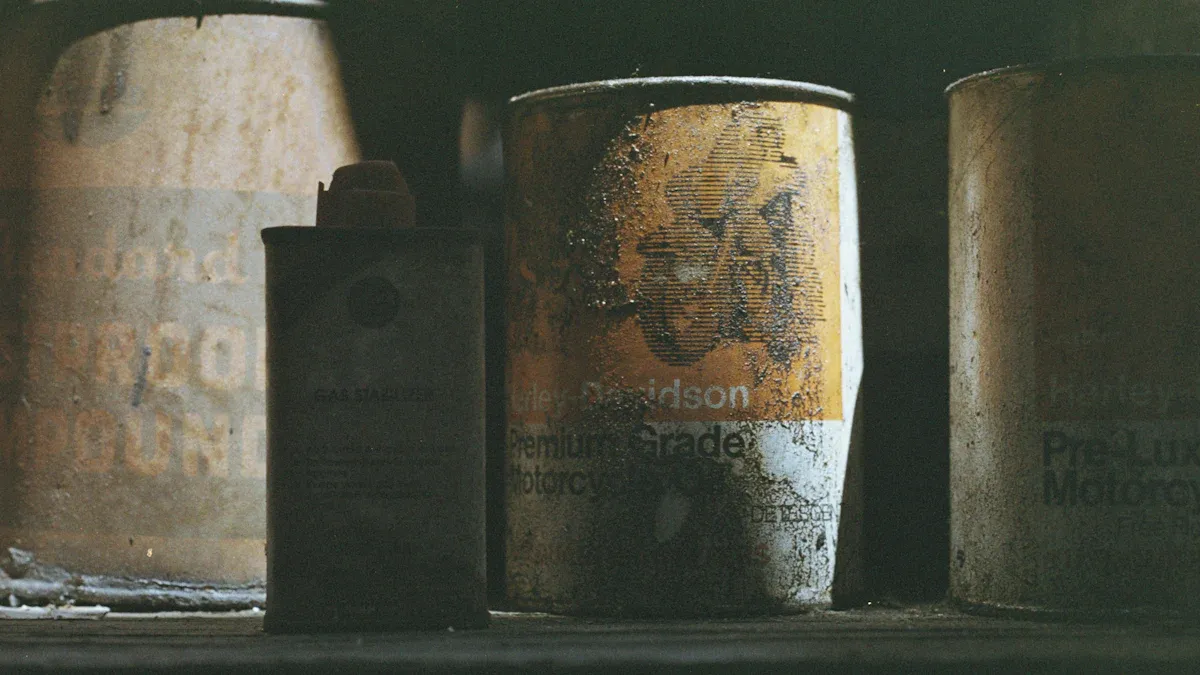
Selecting the right grade and size of honed hydraulic cylinder tubes is very important. It helps the hydraulic cylinder work well and last longer. TORICH’s SRB Tube Honed Hydraulic Cylinder Tube is known for being precise and reliable. It works well in tough hydraulic cylinder jobs. The grade and size of a honed tube change how well it resists wear. They also affect how much pressure it can handle and how long it will last. Engineers and technical buyers need good hydraulic cylinder tube choices. This helps them get the best results in construction machines. Every hydraulic cylinder needs certain honed tube sizes. This makes sure the hydraulic system works smoothly and lasts a long time.
Key Takeaways
-
Picking the right grade and size of honed hydraulic cylinder tubes helps make hydraulic systems strong. These systems last a long time. They work well and do not wear out fast.
-
Different steel grades like carbon, alloy, and stainless steel have special strengths. They also fight rust in different ways. This helps meet many hydraulic cylinder needs.
-
Standard tube sizes cost less and are easy to find. Custom sizes fit special machines and hard jobs better.
-
Tight size tolerances and smooth inside surfaces lower friction. They stop leaks and help hydraulic cylinders last longer.
-
Heat and surface treatments like nitriding and chrome plating make tubes stronger. They also stop rust and help tubes last longer in tough places.
Honed Hydraulic Cylinder Tubes Overview

Honed hydraulic cylinder tubes are very important for hydraulic cylinders. These tubes have a smooth inside surface. This lets the piston move easily with little rubbing. TORICH’s SRB Tube Honed Hydraulic Cylinder Tube is a good example. It gives strong, seamless honed tubes that fit tough hydraulic cylinder needs. Engineers use these tubes to help machines work well and last longer.
Grades and Materials
Many steel grades are used to make hydraulic cylinder tubes. Some common grades are ST52, SAE1020, C20, SAE1026, 4140, CK45, and E355. Stainless steels like SUS304 and SS316 are also used sometimes. Each grade has different strength and surface finish. This makes them good for different hydraulic cylinder jobs. The industry uses standards like ASTM A519, DIN2391, and EN10305 to make sure of quality. The table below shows some steel grades used for hydraulic cylinder tubes:
|
Steel Grades and Materials |
Description |
|---|---|
|
Carbon Steels |
ST52, SAE1020, C20 |
|
Alloy Steels |
SAE1026, 4140, CK45 |
|
Stainless Steels |
SUS304, SS316 |
|
Other Materials |
STKM13C, E355 |
|
Standards |
These materials work well in high-pressure hydraulic cylinders. They also meet the right honed cylinder tube needs.
Manufacturing Processes
Making honed tubes takes many careful steps. First, cold drawing shapes the steel. Next, skiving and roller burnishing make the inside smooth and correct. Honing then makes the surface even better. This gives tight size control and low roughness. Machines like the Sunnen HTA system help keep the process exact. These tools make sure each honed tube is the right size and smoothness. Tests and checks look for problems and make sure of quality. Some tubes get extra treatments, like heat or coatings, to last longer. Both seamless and welded honed tubes use these steps. Double-honed tubes and honed steel tubing also get better performance and longer life.
Note: Using advanced methods and careful checks helps honed hydraulic cylinder tubes work well in hard jobs.
Grade Comparison for Honed Tube
Chemical Properties
Steel grades for hydraulic cylinder tubes have different chemicals inside. These chemicals change how the tube handles pressure, heat, and wearing out. Low carbon steel, like AISI 1020, has less carbon. This makes it easier to cut and join. Medium carbon steel, such as AISI 1045, has more carbon. It is stronger and harder than low carbon steel. Alloy steels, like 4140 and 4340, have chromium and molybdenum. These make the steel tougher and help it last longer. Stainless steels, like SS 316, have chromium and nickel. These help the tube fight rust, which is good for harsh places.
The chemicals in the steel help the tube not rust, hold high pressure, and stay smooth. Engineers pick steel grades for hydraulic cylinder tubes by looking at these chemical properties. Tubes with the right chemicals last longer and work better in machines.
Mechanical Properties
Mechanical properties show how a hydraulic cylinder tube acts when pushed or pulled. These include tensile strength, hardness, and how much it can stretch. The table below shows some main grades used for honed cylinder tubes:
|
Grade Type |
Tensile Strength (MPa) |
Hardness (HB/HRB/HRC) |
Elongation (%) |
Typical Applications |
|---|---|---|---|---|
|
Low Carbon Steel (AISI 1020) |
85-105 HRB |
25-30 |
General machinery, structural components |
|
|
Medium Carbon Steel (AISI 1045) |
600-800 |
180-220 HB |
20-25 |
Automotive parts, hydraulic systems |
|
Alloy Steel (AISI 4130) |
750-950 |
250-300 HB |
15-20 |
Construction machinery, aerospace |
|
Stainless Steel (304, 316) |
500-800 |
180-200 HB |
30-50 |
Chemical, food, marine environments |
|
Alloy Steel (4340) |
>1200 |
>40 HRC |
10-15 |
High-performance machinery |
Mechanical properties tell us if a tube can handle hard work. High tensile strength and hardness mean the tube is strong. Elongation shows how much the tube can stretch before it breaks. Tubes like 4340 are very strong and last long in tough jobs.
Application Suitability
Picking the right grade for a honed tube depends on the job. Each grade works best for certain uses. Low carbon steel is good for simple jobs and costs less. Medium carbon steel is strong and easy to work with. Alloy steels, like 4130 and 4340, are very strong and resist wearing out. These are good for big machines and high-pressure jobs. Stainless steel, like SS 316, does not rust. It is best for chemical plants or places near the sea.
The grade you pick changes how well the tube works, how long it lasts, and how much it costs. Thicker tubes are stronger but cost more. Engineers must think about all these things to pick the right tube. TORICH has many grades for honed hydraulic cylinder tubes. These grades meet world standards like ASTM A519, EN 10305-2, DIN 2391, JIS G3445, and GB/T 8696. The ST52 grade follows DIN EN 10025-2. This means TORICH’s tubes can be used in many countries.
Tip: Throwing away or recycling honed hydraulic cylinder tubes helps the earth. Reusing or fixing tubes saves materials and cuts down on trash. Sorting tubes by grade and size makes recycling easier and helps keep things green.
Hydraulic Cylinder Tube Size Selection

Picking the right hydraulic cylinder tube size is very important. The tube’s size and diameter must fit what the cylinder needs. Engineers choose the inside diameter, wall thickness, and length carefully. This helps the hydraulic system work well. If the size is wrong, the cylinder may not work right. It could also wear out faster. The correct tube size lets the piston move with less rubbing. This helps the hydraulic cylinder last longer.
Standard vs Custom Sizes
Hydraulic cylinder tubes are made in many standard sizes. These sizes work for most machines in building, mining, and factories. Standard honed tube sizes go from 30 mm to 800 mm inside. Wall thickness can be from 3 mm to 50 mm. In inches, inside diameter is 1.5 to 30 inches. Wall thickness is 1/8 inch to 2 inches. The table below shows some common sizes and wall thicknesses:
|
Inside Diameter (mm) |
|---|
